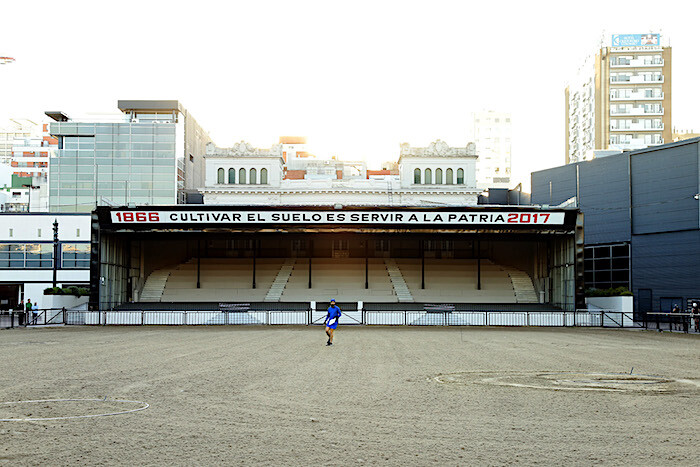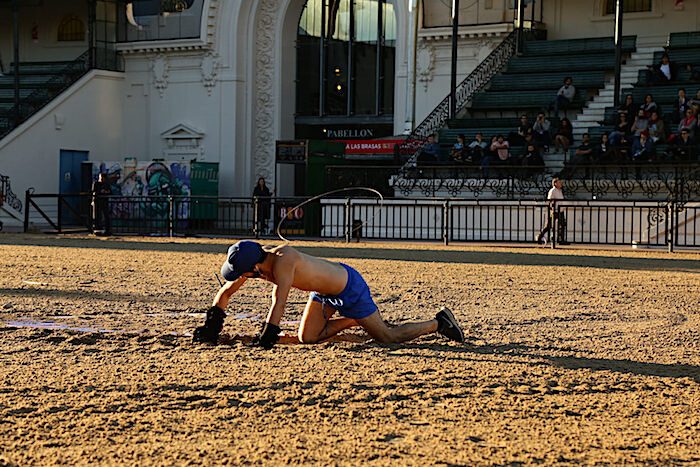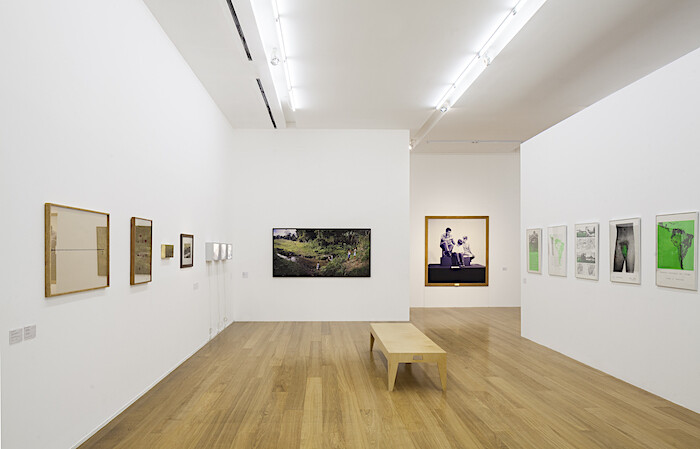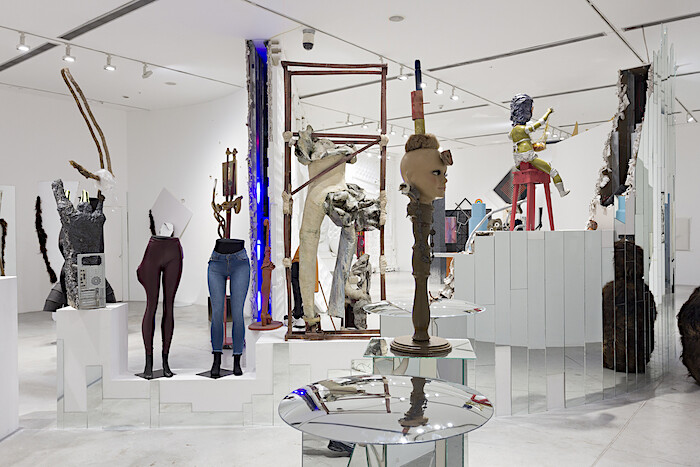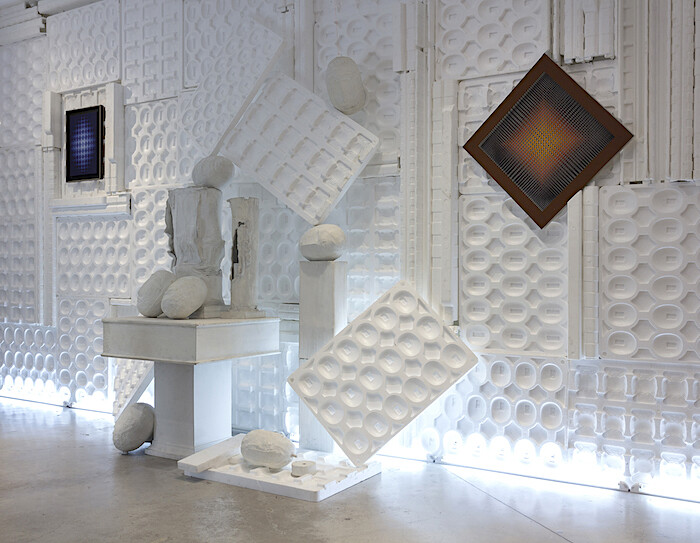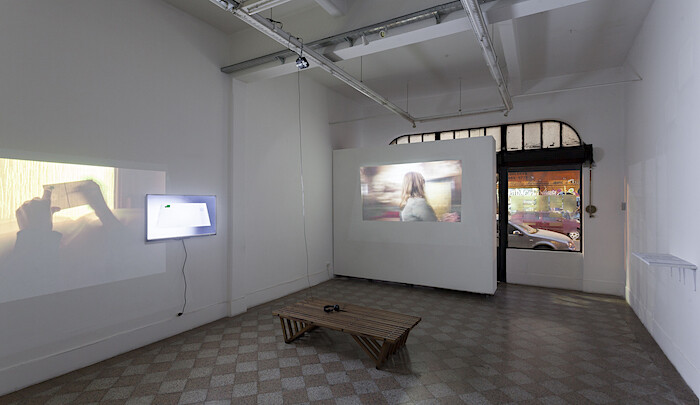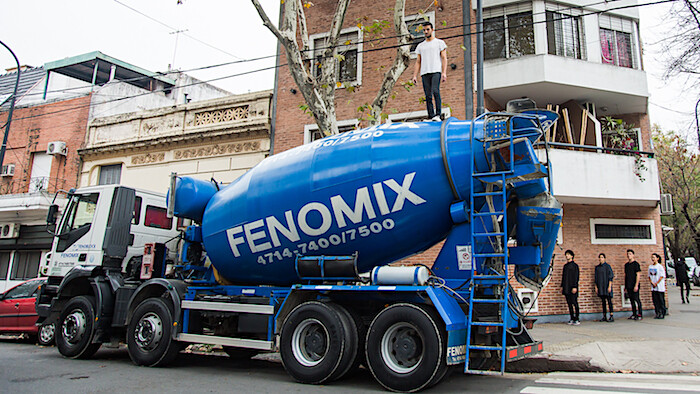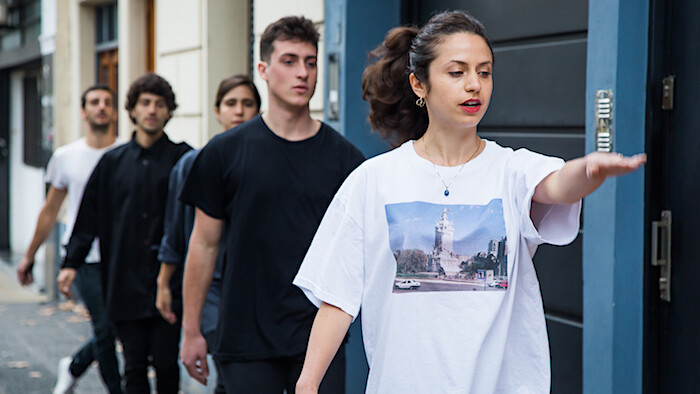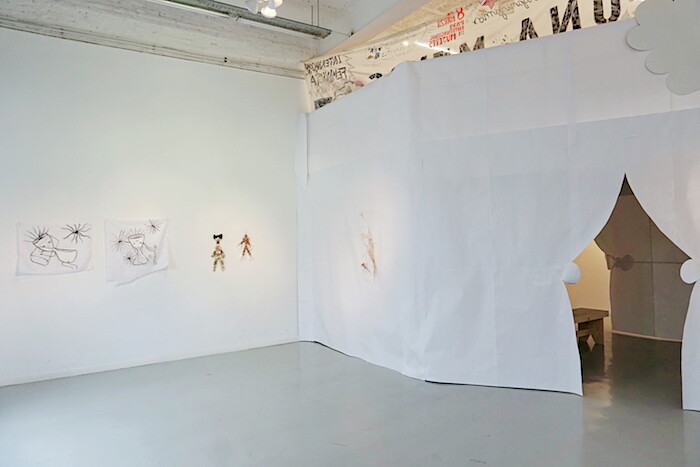“1866 - TO CULTIVATE YOUR LAND IS TO SERVE YOUR COUNTRY - 2017.”
This is the phrase that appears on a billboard above the bleachers at the central courtyard of La Rural fair and congress center, a neuralgic space of Argentine agricultural policy with deep symbolic and affective roots. On May 23, in the same space where several Argentine presidents—from Juan Domingo Perón to Mauricio Macri through Jorge Rafael Videla and Cristina Kirchner—have given impassioned speeches to the masses, several roller derby skaters circled around, while in the arena artist Osías Yanov made holes in the ground using different geometric iron structures, simulating a kind of acupuncture on the site.
The appealing and challenging performance, entitled Antena Vaginal (Vaginal Antenna) (2017), was part of “rro,” a program curated by Javier Villa and Sarah Demeuse for arteBA 2017. During the action, when Yanov showed part of his butt and laid it on the ground, one of the fairground’s security guards watching the event shouted at him to stop. This could simply be one more anecdote of the reactions that arise at this type of art event when held outside of art spaces, but I found it a clear indication of where we were, taking into account the guard’s manifest awareness of the place—the site that defines agriculture’s fundamental role in the national political landscape, where cultivating one’s land is serving one’s country—and the rigorous morals it engenders.
Another forum contesting official national narratives during arteBA was the Museo de Arte Latinoamericano de Buenos Aires, where the collection had been rearranged with “Verboamérica,” a new exhibition curated by Andrea Giunta and Agustín Pérez Rubio. It is part of the museum’s larger research project that brings postcolonial history to the forefront. The presentation goes beyond a typical chronological narrative, instead grouping works into thematic sections in which different formats and historical moments co-exist, making the crisis of linearity and singularity in historical time evident. In spite of an excessive accumulation of works in some sections, the rewriting of this extensive collection is decidedly meaningful, opening up the possibility of manifold historical approaches and readings. A catalogue brings together a glossary of key terms—“Activism,” “Destructive Art,” “Military Dictatorship,” “Madi,” “Postcolonialism,” “LGBT”—that are all linked to the works of this collection, and come from the artistic, social, and cultural experience of Latin America, making a rewriting of its modern and contemporary history possible.
At the Museo de Arte Moderno, we find another proposal that delves into new ways of reading between the lines of a collection. “El presente está encantador” [The present is charming], an extravagant project by Diego Bianchi, posits a new way of putting the museum’s heritage in motion. Bianchi’s installation creates a theatrical and suffocating entrance through a corridor that surrounds the whole space, leading viewers to an area where, among strange sounds and colorful blinking lights, innumerable mannequins, weird anthropomorphic figures made by different discarded materials, disembodied torsos, and found objects emerge as devices, situations, and scaffolding for the circulation, exhibition, and perception of historical pieces. Included in the installation are artworks from the museum collection—from Argentine artists anchored to the modernist tradition such as Norberto Gómez, Alberto Heredia, and Margarita Paksa. Bianchi deals with the collection as an artist, away from historicisms or curatorial prejudices, using historical objects as living elements full of meaning and narrative, that when gathered in the present, generate a new, unprecedented scenario.
In the Villa Crespo area, two of the city’s most active and interesting galleries offer proposals that explore extremely contemporary issues. In its two spaces, Slyzmud unfolds an essay-exhibition curated by Larisa Zmud and Alan Segal, “Los Derivados” [The Derivatives], which investigates the intricate relationship between productivity and affect in contemporary irregular and schizophrenic work environments. Works by Mercedes Azpilicueta, Martin Touzón, and Alex Martinis Roe, among others, reveal a fragmented plot that hints at the contradictions in our current lives. Madeline Hollander’s site-specific performance, 365 (2017), takes place on the streets between the gallery spaces. Six performers follow a twelve-step movement series—one for each month in a year—around two cement trucks, whose cargo rotates 365 times, equivalent to one year.
Nora Fisch Gallery presents the particular and intimate work of Fernanda Laguna, an essential artist in Argentina with great importance at the intersection of art and activism. Laguna transforms the gallery into a paper castle that hosts a series of videos in which the artist can be seen explaining her practice, commenting on the situation of the Argentine (or any peripheral) artist in the global network. On the second floor, a second exhibition, “Mareadas por la marea” [Dizzy from the tide], curated by Laguna and Cecilia Palmeiro, gathers different objects and documents from the recent wave of feminist marches in Argentina. It is both the record of that experience as a space for reflection about how a revolutionary process is lived, and the exploration of the materials of an affective revolution found in personal archives. Laguna is an artist who, despite frequenting museums and galleries, often places herself on the sidelines, such as with the various projects and independent collectives she’s founded since the late 1990s. The art space and publishing house Belleza y Felicidad [Happiness and Beauty], for example, operated in the Almagro neighborhood until 2008, while opening a “branch” in Villa Fiorito, a shantytown in Lomas de Zamora, in 2003.
La Ene equally locates itself on the periphery of the art circuit. It emerged seven years ago from within the artistic community as an independent project that performs as a museum. An experiment on the connection between the artist, the institutions, and existing forms of legitimation, it focuses on artists who thrive outside the art system, reflecting on how to provide a place for them. Currently on view is “Una época/Ninguna época” [A time/No time], a show curated by Tobias Dirti and Martin F. Halley that takes up grunge aesthetics as a rejection of restrictive and transient fashions.
And if there is any artist who does not fit into a particular mold, it is Xul Solar, whose retrospective exhibition “Pan-Activista” can be seen at the Museum of Fine Arts. A quintessential figure for understanding the history of the local avant-garde, Solar attempts to transform existing knowledge systems such as language, music, writing, and esoteric thinking, with the ultimate goal of achieving global unity through a system of “universal reforms.” He created two languages and a new writing system, transformed instruments and musical notation, made changes to tarot cards, and imagined future cities, among other inventions. While I was among his fascinating objects and drawings, I remembered some words from one of “rro” emails, stating the curators’ intent to celebrate the absurd and the imaginary, and the urgency of touching the present—something Solar certainly did in his time. This thought seemed to crystallize a mood in the air in Buenos Aires in my walks between these different venues: the responsibility to inquire into the past to grasp a deep understanding of how we got here, and the urgency of establishing connections between our absurd present and the legacies of the past from unconventional positions.
